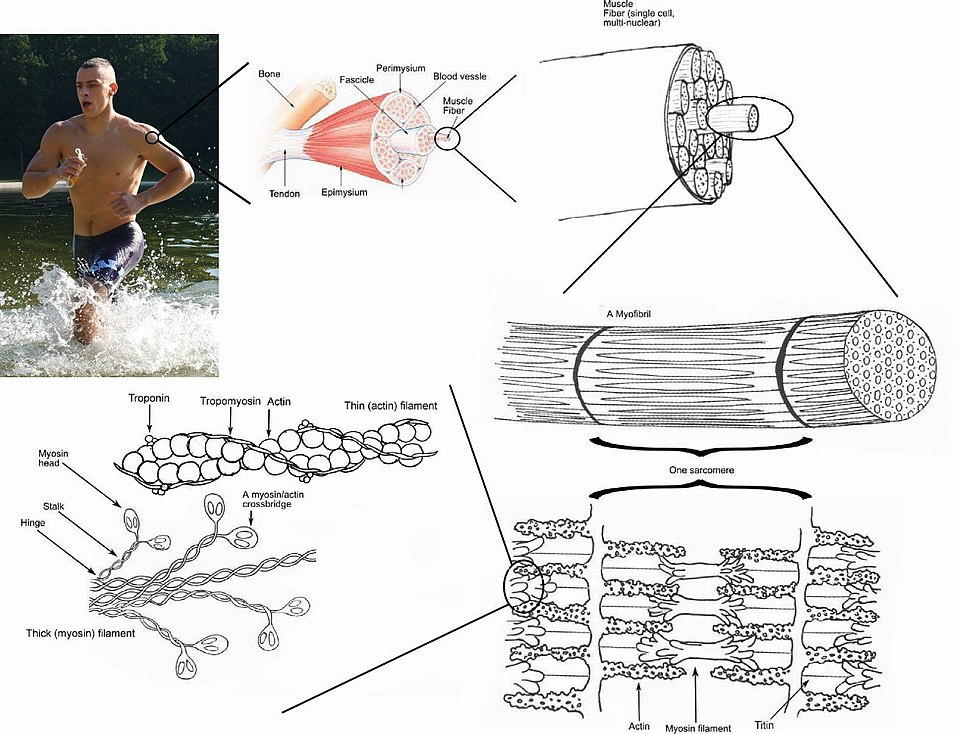Difference between revisions of "AY Honors/Bones, Muscles, and Movement/Answer Key/es"
(Created page with "</noinclude> <!-- 12. ¿Cuál es la función del sistema muscular? -->") |
(Created page with "</noinclude> <!-- 13. Nombrar y describir tres clases de tejido muscular. Dar un ejemplo de cada uno. -->") |
||
| Line 121: | Line 121: | ||
{{ansreq|page={{#titleparts:{{PAGENAME}}|2|1}}|num=13}} | {{ansreq|page={{#titleparts:{{PAGENAME}}|2|1}}|num=13}} | ||
<noinclude></noinclude> | <noinclude></noinclude> | ||
| − | <!-- 13. | + | <!-- 13. Nombrar y describir tres clases de tejido muscular. Dar un ejemplo de cada uno. --> |
| − | |||
| − | |||
| − | |||
<noinclude></noinclude> | <noinclude></noinclude> | ||
Revision as of 21:48, 15 February 2021
| Huesos, Músculos y Movimientos | ||
|---|---|---|
| Asociación General
|
Destreza: 2 Año de introducción: 1999 |
|
Requisitos
1
2
3
4
5
- Carpos
- Clavícula
- Cráneo
- Fémur
- Peroné
- Húmero
- Mandíbula
- Huesos maxilares
- Metacarpos
- Rótula
- Pelvis
- Falanges
- Radio
- Costillas
- Escápula
- Cóccix
- Esternón
- Tarsos
- Tibia
- Cúbito
- Vértebras
6
7
8
9
10
11
12
13
14
- Masetero
- Trapecio
- Deltoides
- Pectoral
- Bíceps
- Abdominal
- Cuádriceps
- Tríceps
- Dorsal mayor
- Glúteo máximo
- Ligamento
- Gastrocnemio
- Soleo
15
- When the muscle is in a resting state, thin strands of a protein called tropomyosin are wrapped around the actin filaments, blocking the myosin binding sites. This keeps the myosin from binding to actin.
- Molecules called troponin are attached to the tropomyosin.
- When calcium is introduced into the muscle cell, calcium ions bind to troponin molecules.
- Calcium then pulls troponin, causing tropomyosin to be moved as well, therefore causing the myosin binding sites on the actin to be exposed.
- Myosin binds to the now-exposed binding sites.
- As soon as the myosin head binds to actin, the head bends at its hinge.
- Once the head bends, the myosin loses energy, and remains attached to the actin.
- When re-energized by adenosine triphosphate (ATP), the myosin head detaches from the actin filament, and is ready to attach and bend again.
- The collective bending of numerous myosin heads (all in the same direction), combine to move the actin molecules closer together. This results in a muscle contraction.
16
Voluntary muscles are attached to the skeletal frame and are generally under the control of the person to whom they belong. These are the muscles in the arms and legs (and elsewhere). Involuntary muscles are controlled by the autonomic system without the conscious control by the individual. Your heart continues to beat, you continue to breathe, and you digest your food even when you are not thinking about it.
17
Please note that the answers given here are only possibilities. If you know a creative way to do this, you are encouraged to add it.
18
Note: In many translations of the Bible, the term "flesh" is used to describe muscles. Here are several passages featuring bones and muscles. Encourage your Pathfinders to look through more than the required three verses. It will be easier for them to describe the passage in their own words if they have made a connection with the verses.
- Categoría: Tiene imagen de insignia
- Adventist Youth Honors Answer Book/Honors/es
- Adventist Youth Honors Answer Book/es
- Adventist Youth Honors Answer Book/Skill Level 2/es
- Categoría: Libro de respuestas de especialidades JA/Especialidades introducidas en 1999
- Adventist Youth Honors Answer Book/General Conference/es
- Adventist Youth Honors Answer Book/Unknown/es
- Adventist Youth Honors Answer Book/Unknown/Primary/es
- Adventist Youth Honors Answer Book/Stage 0/es


